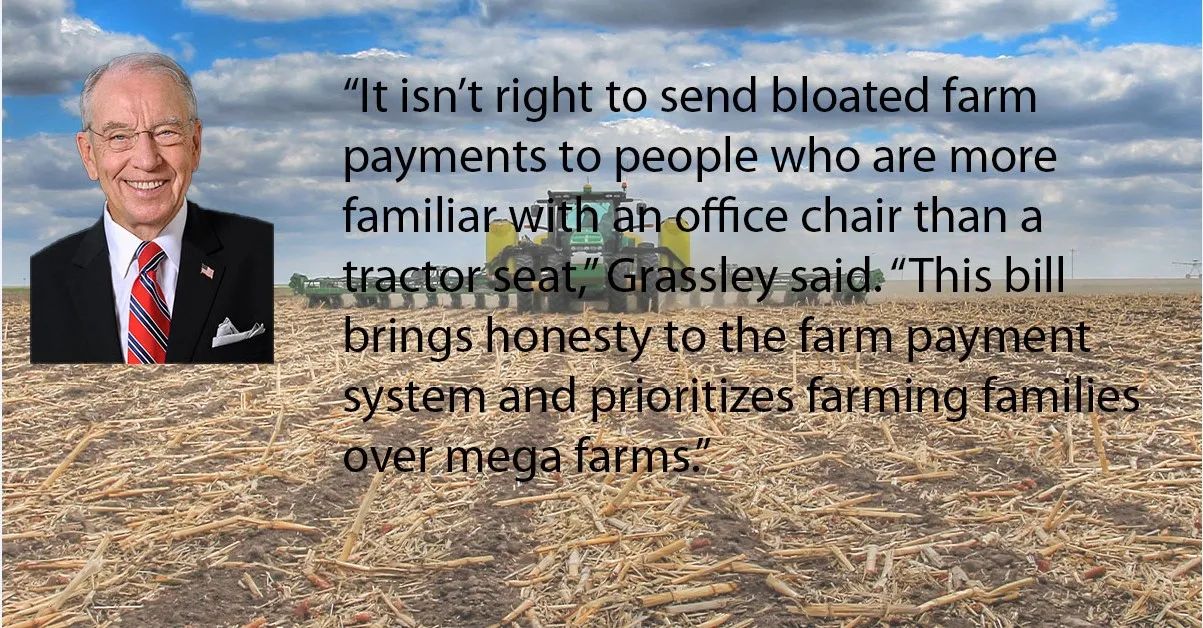
Grassley's Farm Program Integrity Act Means Major Cuts to FSA Limits for General Partnerships
August 18, 2023
WASHINGTON, D.C. — Most FSA programs include payment limitations which limit the number and amount of payments any individual and some type of business entities may receive. See the table below for programs and their respective payment limitations. The limitations mean that no person, corporation or LLC may receive more than the designated limitation for the corresponding program in a single year. However, there is a notable exception to the payment limitation rule – general partnerships. Currently, a general partnership may have as many payment limitations as it does eligible partners. The Farm Program Integrity Act would limit general partnerships to just two payment limitations.
Let’s look at some examples using the ARC program ($125,000 payment limitation):
Farmer is a sole proprietor and is enrolled in ARC. Farmer is eligible for one payment limitations may not receive more than $125,000 in ARC payments in any year.
Farmer is married and Spouse owns 50% of the farm assets. Both Farmer and Spouse are likely eligible for a payment limitation and could receive up to $250,000 in ARC payments each year.
Ohio Grain Farms LLC is a farm operation with 4 owners, all of whom are actively engaged in the farming operation. Because this entity is an LLC, it is only eligible for one payment limitation. The LLC cannot receive more than $125,000 in ARC payments in any year.
Ohio Grain Farms Partnership is a general partnership with 4 equal partners, all of whom are actively engaged in the farming operation. The partnership is currently eligible for four payment limitations and could receive up to $500,000 of ARC payments in any year. The Farm Program Integrity Act would limit the partnership to two payment limitations or $250,000.
As the examples show, the number of payment limitations can have a significant impact on farm income.
According to a release from Grassley’s office, the bill is meant to rein in abuse of the farm payment system and ensure taxpayer support is targeted to those actively engaged in farming. Grassley said just 10 percent of farm operations receive 70 percent of all yearly farm payment subsidies.
“It isn’t right to send bloated farm payments to people who are more familiar with an office chair than a tractor seat,” Grassley said. “This bill brings honesty to the farm payment system and prioritizes farming families over mega farms. Hard-earned tax dollars should only be sent to hard-working farmers – those with calluses on their hands and dirt under their fingernails.”
Source: The Ohio State University Extension and Western Ag Network










